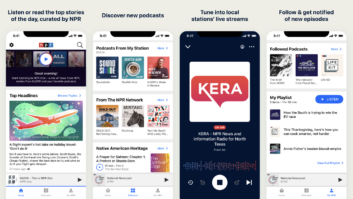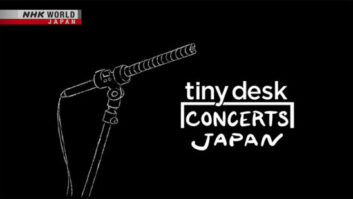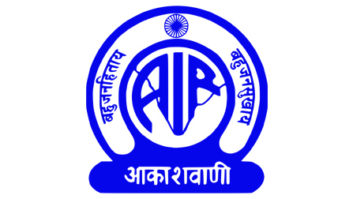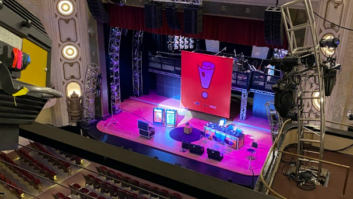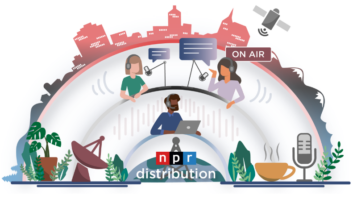
NPR has moved its engineering research division, NPR Labs, under its corporate budget and out of the Distribution Division; I’m told that the entity will no longer need to be solely self-supported by grants and other funding such as corporate contracts. Coming at a time of broader financial challenge for the organization, the change will help ensure the long-term success of NPR Labs, according to NPR Vice President of Technology Operations, Distribution and Broadcast Engineering Marty Garrison.
However, the move comes at a cost; NPR Labs Director Rich Rarey’s position was eliminated, a decision Garrison called “very difficult” in a note to broadcast staff. Rarey left at the end of July. As of Aug. 1, NPR Labs became part of the Technology & Operations Division.
Senior Technologist John Kean and Technical Researcher Alice Goldfarb remain; they will report to Chris Nelson, director of technology strategy, who adds director of NPR Labs to his title.
BACKGROUND
NPR Labs will turn nine years old this fall. In a March 2005 opinion article for Radio World, Mike Starling, then the vice president of engineering and operations for NPR, wrote about the need for an entity like NPR Labs.
He said technical research at one time had played an important role in the industry, mentioning the role of past labs at NBC and CBS, as well as the technical unit of the Corporation for Public Broadcasting in the 1970s and ’80s. Starling called for the creation of a “lasting, public-service driven, radio broadcast technology research center” whose activities would focus on the user experience.
He helped create NPR Labs that October and became its executive director. As I wrote at the time, its mission was to provide system representation and technical expertise on regulatory and legislative issues important to the stations and public radio system.
Early NPR Labs projects included conditional access for the blind and hard-of-hearing with the release of the Dice ITR-100A, a “talking radio.”
“Tomorrow Radio” was an early project; this was a joint effort with Kenwood USA and the former Harris Broadcast to test the transmission and receive feasibility of multicast channels for HD Radio.
NPR Labs also helped the formation of the Association of Public Radio Engineers. In 2006, it went to bat with NAB to get the FCC, Sirius and XM to recognize the issue of signal leakage from some aftermarket wireless FM modulators for satellite radio that were interfering with some broadcast radio stations.
BUDGET CONCERNS
Initially, NPR Labs constituted its own department. In 2009, looking to increase efficiencies, NPR moved it under its Distribution Division. The Labs and Distribution had collaborated occasionally on projects; NPR thought aligning them more closely made sense at the time. The move would also give Labs more back-office support, freeing engineers to focus on more technical tasks, according to Starling and NPR Vice President of Distribution Pete Loewenstein back then.
At that point NPR Labs was expected to become self-sustaining, similar to the Public Radio Satellite System, which also was part of Distribution. With that goal, Labs focused on grant-funded work and expanded its scope to include fee-based consulting services to public radio stations, industry partners and commercial clients.
Two projects I think of stand out here. Labs conducted testing for the Broadcast Traffic Consortium, of which NPR is a member, to confirm that the HD Radio datacasting stream had the capacity for stations to offer traffic information; it did. The Labs also performed research for Nautel, validating the transmission manufacturer’s technology for asymmetrical HD sideband transmission, which it says improves FM digital reception.
But recently, NPR overall experienced a budget shortfall of some $6 million, and last year it offered buyouts as part of a two-year plan to balance its budget. Significantly, the network eliminated a news show as well as 28 associated positions.
Starling had accepted that staff buyout, retiring in February. At that time, Rarey, manager of strategic technology applications for the Labs, was named director.
Consequently, I’d heard rumors that Labs had a budget shortfall but that it was being handled internally. When news of the latest changes became evident in July, I asked a spokesman about the Labs annual budget numbers and the size of its shortfall; he said the network hasn’t publicly broken out the budget numbers that way.
Starling and Rarey both declined comment for this article.
DHS
Engineers in the public radio system expressed shock at Rarey’s departure, and some questioned the future of Labs, whose full-time personnel have now been reduced by half.
One station engineer told me, “Severing Rich is a problem for John Kean, not only because of [Rarey’s] proven technical expertise but also because of his fundraising ability. [Kean] will not have time to canvas the industry looking for projects. That will mean that their funds will have to come 100 percent from the NPR budget, at which time their continued existence may be in question since their projects relate most directly to over-the-air” radio.
Another station engineering source told me, “We’ll see what happens, but I suspect that when the contracts run out, it’s gone.”
One such contract likely will end soon; I hear that a final report is due Aug. 31 for the Department of Homeland Security alerting project for the deaf and hard of hearing. That testing, funded by FEMA and managed by DHS, involves development of an accessible FM RDS receiver to be used in an emergency alerting demonstration program in the Gulf Coast region.
Labs has other projects in the works, like working with the National Radio Systems Committee on studies to determine compatibility of FM single-sideband transmissions and a study on AM modulation-dependent carrier level transmissions.
GRANT-WRITING EXPERTISE
Garrison declined to list the NPR Labs current contracts or their expiration dates. He said NPR Labs will be able to tap in-house expertise for grant application-writing.
He also says NPR Labs will continue. “The scope and ambitions of the contracts underway with NPR Labs will not change, and the group will remain an industry leader in R&D projects such as emergency alert messages for those who are deaf or hard of hearing,” Garrison told me.
One noncommercial station engineering source quoted said losing Rarey will also be a loss for Kean when he’s stumped on a project and needs someone with technical expertise to bounce ideas off of. I posed this line of thinking to Garrison, who responded: “NPR Labs’ mission and activities will remain the same and staff will be able to get feedback and support from their colleagues within the division that will enrich their work.”
Garrison indicated Labs may hire contractors in the future if necessary.
NPR Labs will remain in its current space at NPR headquarters, which consists of an equipment area, a workbench, a listening room and office space.
Others in the larger radio community are watching this play out with interest.
At Greater Media, Milford Smith, vice president of radio engineering, told me: “I can certainly say that we have always valued the tremendous resource that NPR Labs and its staff represent to the radio industry. It is largely unique in its expertise, knowledge and facilities and has done a lot of extremely valuable work that has helped the radio industry move forward with new technology while in many cases helping us to better understand current technology. I would surely hate to lose this important broadcast laboratory; I’m not sure where one would find an alternative.”
“We really respect NPR Labs and its people, and look forward to continuing to cooperate as it evolves. I think NPR Labs has done some great technical work that has helped support the needs of not only public broadcasters but the industry as a whole,” Nautel Marketing Director John Whyte tells me.
At first glance, the change “doesn’t bode well” for the future of NPR Labs, according to one station-based engineer in the public radio system.
I’m hoping that bringing Labs under NPR’s corporate budget umbrella gives it a chance to ride out the financial storm and rebuild. One of the engineers quoted above told me: “I hope that something will change and that Labs will find a solid source of long-term funding, but I don’t see any clear path to that end.”
ENGINEER’S ENGINEER
Rarey, who is also a contributor to Radio World, had been with NPR 34 years, the last five at Labs.
In his note to staff, Garrison called Rarey “an engineer’s engineer — someone who has a visionary grasp of what is possible in broadcast engineering and the technical expertise to bring those visions to life.”
Rarey got his start with NPR in 1980 at NPR’s Chicago Bureau as a bureau engineer and technical director. He was the first technical director for “Weekend Edition” and held that post with “All Things Considered” as well as “Talk of the Nation” and other NPR programs. He co-engineered the first national Dolby Surround FM broadcast for NPR’s “Weekend Edition Sunday” in 1992.
In D.C., Rarey became supervisor of NPR’s Master Control in 2000, overseeing the systems at the heart of NPR’s audio content intake and control. In 2008 he moved to NPR Labs as manager of strategic technology applications, architecting and designing key projects including prototyping systems to support access to radio content by those who are deaf or hard of hearing, as well as listeners with visual impairments.






